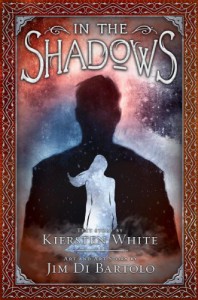Grimlock ♥ Ultra Magnus
I'm a well read grad student who's bluntly honest about all things, although I try to be most honest about myself.
Currently reading










Quite good, With a Side of Issues... (Crosscut)

This was far better than I expected, to be honest. And I really just read it for the ARC ninja badge on Literally, because The Bees so bad. (Luckily I found another Bee book!) I'll probably finish The Bees soon for one of the Insecticon characters, however.
Getting back to this book, though. It's told via prose and art, which a short chapter, then a couple pages - to over ten - of art, then back to a chapter of prose, then the art. Both the artist and writer are equally skilled, fleshing out a story that spans centuries, with the focus on a small cast of characters. The prose is more easily spoken about, for me, as it was more straightforward, and you didn't understand the art-story until the end - and I still don't understand it fully.
The writing was lush, the characters full and full of a spirit that made me connect with them, as well as feel their pain and joy, quite deeply. More deeply than I expected, in fact, and more than I hoped when I choose to read this based on the illustrations. Cora and Minnie work for, and with, their mother, as their father died in a manner which leaves Cora with a deep feeling of guilt, questioning if she brought death to their family's doorstep. It leaves her withdrawn, and Minnie is determined to bring out the old Cora, a little more wild, a little more full of life. Mrs. Johnson, their mother, takes in boarders, such as the brothers Charles and Thom - Thomas - Wolcott. You see, they were ordered their by their obscenely rich farther, for Charles' benefit supposedly. After all, Charles is dying. However, Thom has heard his father have a bizarre and unsettling argument with a woman over a debt the night before they leave.
Which is where the art comes in. The woman and her cohorts do have a debt to claim and they tell their why through the art. The history of them? Told through the art. Except here's where it gets odd, and confusing. The prose is given no date in which to anchor when this happens; the art is quite clear about giving dates of when things happen, which a couple exceptions. (The ending exceptions will either be clever or annoying, and gimmicky, and I couldn't quite decide which it was in the end. I decided it was a little bit of both, which annoyed me more than I expected given the cleverness of it all.)
The prose is all prose, and the art is speechless, with the exceptions of some letters which are painted, and which you can, at points, read. And of course, with the exceptions of the locations and dates at the beginning of each segment of art. However, this makes the whole endeavor feel a little discordant, especially as this ends with the art, which I reacted to a little less on an emotional scale as the actual prose seemed to flesh out the story and characters and developments so much more. The two were slightly discordant in the amount of information each gave, in how I felt about them, and in the end, I think separating them so severely in execution - making them polar opposites - didn't quite work for me. I did react to the art, quite a lot, but it was mostly to look at the detail and skill of the artistry. I feel like it was supposed to evoke more emotion, and that something was missing when it didn't.
It bothered me enough to detract one star - I feel like the two separate stories could have meshed better, and could have made more sense. I felt puzzled by why this was written and put together in quite this manner. Given that one fault, however, this was a very, very quick and pleasant read. Quick because it was half or more art, and pleasant because it was so well written and painted; I was drawn into the multiple romances despite it not being my favorite plot, or trope even. It was sweet, it was balanced by the action and suspense, enough so that it kept my wanting to read more despite really wanting to get in some more sleep today.
I would recommend this to most anyone, in fact.
**I received an ARC of this book from the publisher.



 13
13
 2
2